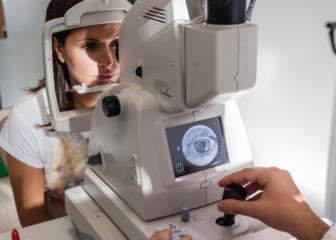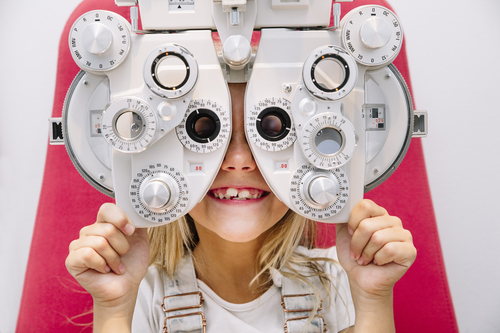Exactly How an Eye Doctor Can Change Your Vision Health in Chino
Discovering the Newest Technological Developments in Optometry and What They Mean for Eye Doctors
From the accuracy of Optical Coherence Tomography to the nuanced insights used by AI-driven analysis devices, these developments are establishing new standards in individual analysis and treatment. As these developments permeate the technique, eye doctors are encountered with the obstacle of accepting these tools to improve patient end results.
Developments in Diagnostic Devices
Advancing the area of optometry, developments in diagnostic devices have actually transformed the means eye treatment professionals evaluate and detect eye conditions and visual problems. The past years has seen significant technical improvements, enabling even more thorough and accurate assessments.
One more trick advancement is the intro of advanced corneal topography systems, which map the surface area curvature of the cornea with accuracy. These devices are especially useful for suitable contact lenses and identifying corneal disorders. Electronic retinal imaging has actually changed standard ophthalmoscopy, providing comprehensive, breathtaking sights of the retina that promote complete visual exams.
The development of wavefront aberrometry has actually additionally been vital, allowing the analysis of refractive errors with unrivaled accuracy (Opticore Optometry). This technology assists in personalizing rehabilitative lenses and boosting surgical outcomes for refractive surgical treatments. Jointly, these diagnostic improvements equip eye doctors to provide remarkable individual care, ensuring early treatment and tailored treatment methods, ultimately improving aesthetic wellness end results
AI in Patient Management
Building on the structure of innovative analysis devices, the unification of expert system (AI) in patient administration stands for a transformative leap for optometry. AI systems are increasingly employed to boost efficiency, accuracy, and personalization in individual treatment. By evaluating huge amounts of information, AI can identify patterns and anticipate prospective eye conditions, making it possible for eye doctors to tailor interventions more properly. This ability is critical in handling chronic eye illness such as glaucoma and diabetic person retinopathy, where early detection and continuous tracking are key.
In addition, AI-driven platforms help with streamlined client interactions and administrative processes. Automated scheduling, digital examinations, and individualized follow-up plans not only boost person fulfillment however additionally maximize time administration for practitioners. These systems can triage individuals based on the urgency of their problems, making sure that those in critical requirement receive timely focus.
Moreover, AI boosts decision-making by providing optometrists with evidence-based referrals and therapy paths. By incorporating information from digital health and wellness records, AI devices supply understandings that inform medical choices, decreasing the danger of errors and improving patient end results. As AI continues to progress, its function in patient monitoring will likely expand, improving the landscape of optometric care.
Advancements in Retinal Imaging
In the world of optometry, retinal imaging has observed impressive technical innovations that are enhancing analysis capacities and individual treatment. Advancements such as Optical Comprehensibility Tomography (OCT) and fundus digital photography have transformed just how eye doctors evaluate the retina and visualize. OCT, particularly, provides high-resolution, cross-sectional images of the retina, permitting the detailed evaluation of its layers. This ability is important for early detection and monitoring of conditions like glaucoma, diabetic retinopathy, and age-related macular deterioration.
Enhanced imaging methods like OCT angiography are more refining analysis accuracy. This non-invasive technique maps blood circulation in the retina, providing crucial insights into vascular health without the requirement for color injections. In addition, adaptive optics modern technology is being integrated into retinal imaging systems to fix eye aberrations, supplying extraordinary image clearness. Such advancements facilitate the recognition of minute retinal adjustments that can represent condition progression.
Additionally, advancements in artificial intelligence are boosting retinal imaging by enabling automated evaluation of large datasets. These systems aid optometrists in identifying patterns a measure of pathology, consequently enhancing diagnostic accuracy and performance. Jointly, these technologies are transforming retinal imaging into a keystone of contemporary eye care, enhancing results and expanding healing opportunities.
Teleoptometry's Expanding Duty
Teleoptometry is progressively becoming an essential part of eye care, driven by developments in digital interaction and analysis devices. This is particularly helpful in underserved and country areas where accessibility to specialized eye treatment is frequently limited.
The combination of synthetic knowledge (AI) further boosts teleoptometry, enabling the evaluation of visual information and helping in the detection of eye conditions such as glaucoma and diabetic person retinopathy. AI-powered algorithms can swiftly analyze complicated imaging information, offering optometrists with beneficial insights dig this that bolster professional decision-making.
Additionally, teleoptometry supports continuity of treatment with seamless integration with digital wellness documents (EHRs), enabling optometrists to keep detailed person backgrounds. This makes sure that patients get personalized and regular treatment even when talking to various practitioners.
Despite these benefits, difficulties stay, consisting of making sure data protection and taking care of person assumptions. However, teleoptometry represents a substantial stride in the direction of more accessible, reliable, and patient-centered eye treatment. As modern technology develops, its duty is positioned to broaden further.

Future Patterns in Eye Care
A myriad of cutting-edge trends is established to reshape the future of eye care, driven by technological improvements and the evolving demands of people. One considerable pattern is the integration of man-made knowledge (AI) in diagnostics, which assures to enhance the precision and efficiency of eye evaluations. AI algorithms can analyze substantial quantities of data from retinal images, possibly identifying conditions like diabetic retinopathy and glaucoma earlier than conventional methods.
Furthermore, customized medication is gaining traction in optometry, with genetic testing educating personalized therapy plans. This strategy intends to enhance individual results by customizing treatments to individual hereditary profiles. Wearable modern technology, such as clever call lenses, is likewise coming up, using real-time monitoring of intraocular pressure or sugar levels, hence supplying continuous insights into systemic and ocular health and wellness.
The fostering of enhanced truth (AR) and virtual truth (VIRTUAL REALITY) in training and client education is an additional arising trend. These technologies supply immersive experiences that can boost understanding and skills both for individuals and eye doctors. As these patterns develop, optometrists need to stay abreast of technical developments to offer advanced treatment, making sure enhanced individual outcomes and fulfillment in the dynamic landscape of eye treatment.
Verdict

Collectively, these diagnostic advancements empower eye doctors to provide remarkable patient treatment, visit site making certain early treatment and click to find out more tailored treatment strategies, eventually boosting visual wellness outcomes.

As these modern technologies proceed to progress, eye doctors must adapt and include them right into practice, eventually enhancing process performance and boosting the criterion of eye care provided to people.